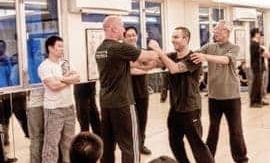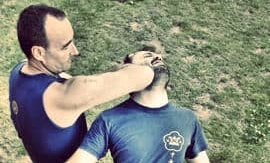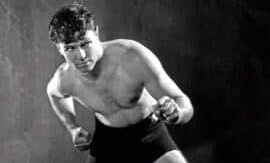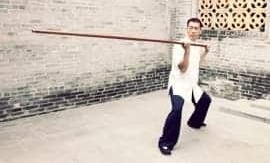
YOU HAVE DECIDED TO TEST YOUR WING CHUN SKILLS, BUT HOW DO YOU PREPARE PHYSICALLY, AND WHAT DO YOU TRAIN IN PREPARATION FOR A CONTEST? REGARDLESS OF THE TYPE OF CONTEST, WHETHER BEIMO STYLE CHALLENGE FIGHT, A MULTI-STYLE FULL-CONTACT COMPETITION, A SANDA TOURNAMENT, OR MMA CONTEST, THE CONCEPT OF HOW YOU PREPARE PHYSICALLY AND PSYCHOLOGICALLY WILL REMAIN THE SAME.
There are four phases that combine to create a training cycle when preparing for Beimo. These involve the physical and psychological preparation of the athlete, which are factors crucial to Beimo preparation. Following these guidelines will help to improve your approach to training for Beimo.
Phase 1: Core Skills and Conditioning
The first phase is the “Core Skills and Conditioning Phase”, which should last up to 16 weeks. This is the foundation period in which you are developing your aerobic conditioning in addition to acquiring new fighting skills or addressing any technical weaknesses that are evident in the application of your Wing Chun. This phase could include developing your footwork or Boxing skills in addition to Chi Sau and Gwor Sau. It is important to note that during this phase, your Chi Sau and Gwor Sau practice should be focused more on the practical aspects of sticking and striking when your hands are free (Lat Sau Jik Chung).
This is essentially a development and maintenance cycle in which physical conditioning is key. Regular, if not daily, conditioning training is important, however, these sessions should last for between 20 and 60 minutes. Training longer does not necessarily provide any noticeable benefit to your overall training regime. However, I have found that scheduling physical training separate to skills training to be more beneficial. It is not advisable to have extreme conditioning sessions unless you involve this aspect in a different training session in the day.
Phase 2: Intensive “Fight Camp”
Once there is a contest date, then your intensive preparation phase begins. This involves physical and psychological fight preparation for the specific demands of your contest. It is essentially the fight preparation period, which should last no more than six weeks. Often referred to as a “Fight Camp”, there is a much higher level of physical intensity that does not involve the development of new skills. This is not the time to learn new skills but rather develop and hone the ones that you already have. The intensity is measured by a greater degree of anaerobic conditioning training sessions combined with lots of sparring or Sanda training.
Physical and psychological intensity is key. During this phase, your workouts should be anaerobic and last for around 20 minutes. Functional fitness exercises trained at high-intensity intervals are the focus at this stage. There should also be an enhanced degree of physical intensity during your sparring sessions in which you face a fresh training partner every three to five minutes. Of course, the nature of your contest would dictate how you train, whether with bare fists, Boxing or MMA gloves. However, if you are preparing for a bare fist contest, then it is still advisable to also train with gloves, especially closer to the date of your contest.
Chi Sau and Gwor Sau at this stage of a “Fight Camp” have rare applicability because these exercises lack the degree of physical intensity required. However, heavy bag training combined with conditioning your hands on a Wing Chun wall-bag is vital.
Phase 3: Pre-Fight Training
The “Pre-Fight Phase” is the last phase of a “Fight Camp” and requires you to taper down the intensity of your training so your body can re-absorb energy in preparation for your fight. In fact, this phase also allows you to prepare psychologically for the ensuing event. This phase requires that you do not engage in sparring one week before your Beimo contest. Instead, you should focus on shadow sparring and visualisation fight training in addition to footwork. Perhaps take the opportunity to do some light Chi Sau focusing more on the concepts of sticking and hitting when the hands are free. However, pad work and live movement drills are more productive during this phase.
Phase 4: Active Recovery
The final phase of the cycle has little to do with preparation for Beimo, rather recovering from the actual contest. After the event, it is important to take an active rest from conditioning and high-intensity training for up to two weeks. Instead, the focus at this stage is on your forms and training on the Wooden Dummy. Of course, you could involve some more elaborate Chi Sau practice or simplistic training, but almost certainly at this stage, it is vital to revisit your basic Wing Chun skill sets to ensure that the “Pre-Fight Phase” has not diluted them.
Once you have completed the “Post Contest Phase”, then you return to the original “Core Skills and Conditioning Phase” and then the cycle repeats itself once again. However, each time the cycle becomes more refined as you physically and psychologically get used to the process of fight preparation. Remember, training scientifically means having a methodology that can be controlled and replicated.
The Psychological Importance of Fitness Training: Mental Toughness
Combat is a highly intensive process, both physically and psychologically. In fact, MMA practitioners are often considered to be some of the fittest well-conditioned athletes in combat sports. Why is that the case? Well, the philosophy of many fight teams is that when skills are equal, fitness may be the deciding factor. In fact, the saying is to “drag your opponent into deep water”. The idea is to attack and wear down your opponent both physically and psychologically.
If your opponent is physically exhausted then they will find it very difficult to defend against your attacks. However, the psychological aspect is much more profound. People often want to give up when they are exhausted. In this sense, they lose the will to fight and this is where true fighters are born. Regardless of what style of martial art you practise, your mind will often be the weakest link.
As mentioned before, exhaustion and fatigue are the biggest problems in any fight. If you are exhausted, then you are unlikely to be able to perform simple repetitive tasks or even think clearly under pressure. In fact, combined with fatigue, it is difficult to keep your Man Sau forward or perform simple motor skills such as Laap Sau. Exhaustion leads to a low level of alertness, hence with slower thinking comes slower reflexes and a reduced reaction time to attacks. Combat stress induces both exhaustion and fatigue very quickly, and these aspects will have a detrimental effect on your performance.
Now you may be thinking that this does not apply to you, since you train Wing Chun purely for self-defence, and you have no intention of ever stepping into an MMA arena. Of course, this is true of the majority of people that practice this great martial art. However, self-defence is as much psychological as it is physical. Human beings can achieve many great things when they believe they can, and this is where the psychology of fighting comes into play. If you truly believe in yourself, then your skills are likely to prevail under pressure. However, you must test yourself physically and psychologically to know whether you are ready to defend yourself. This means that you have to push your limitations.
On Closing
It depends on the type of fight that you are preparing for, but the principle will ultimately be the same. A training camp should last around six weeks, with the aim of peaking physically and mentally at the end of the preparation period. However, you cannot keep training at an intensive pace throughout the year, as you will find that there will be little to no improvement in your fighting ability. It will be difficult to maintain your peak performance long term. Effective scientific training should focus on various short cycles of focused fitness, skills training, and development. This will prepare you physically, but most importantly psychologically for Beimo.



















